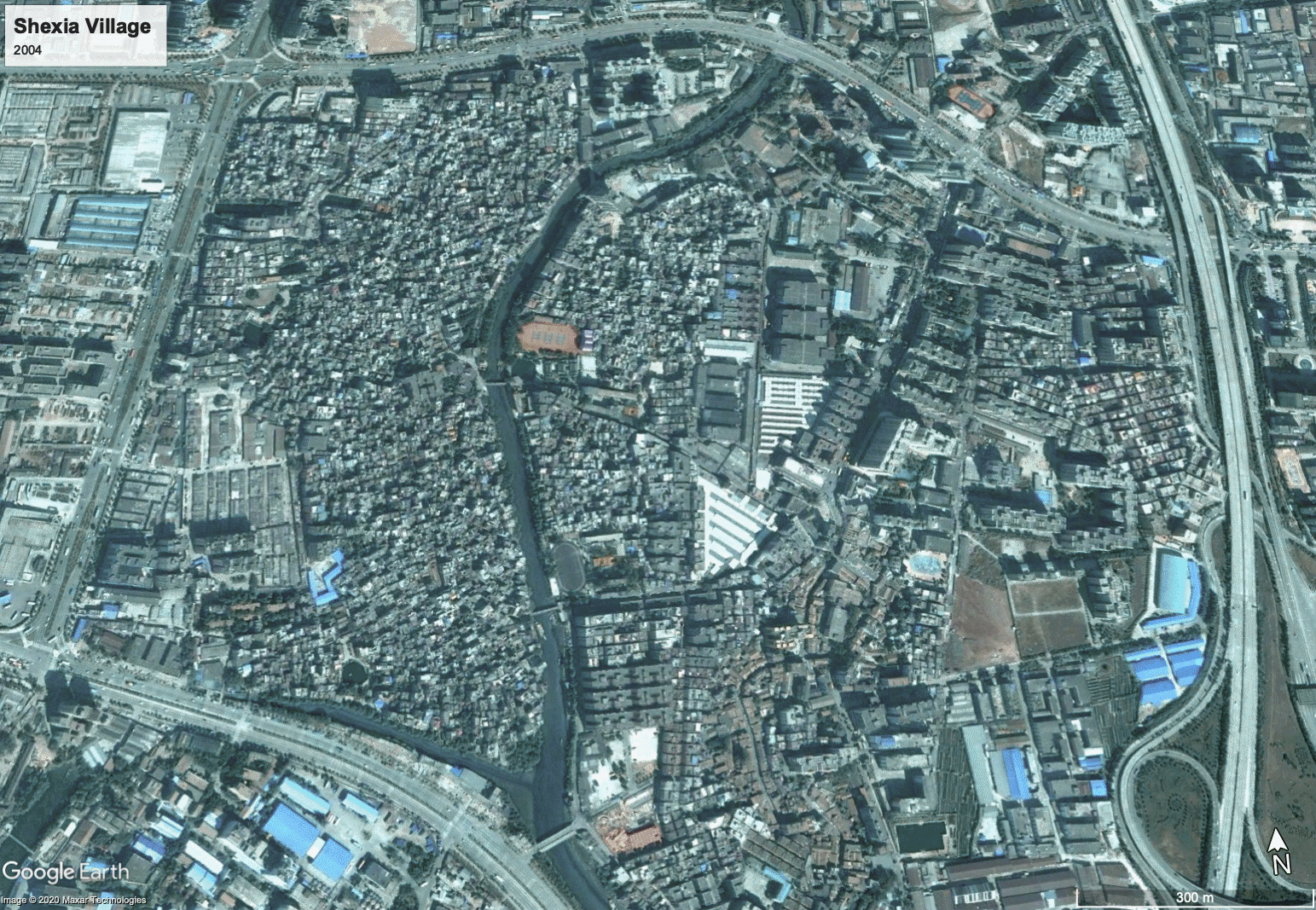Research Background - She is in Urban Village
Migration
My research topic is to conduct architectural and environmental studies on women in urban villages in China. At present, more than three quarters of the residents of urban villages in China are immigrants, mainly from rural to urban areas. Therefore, my research is actually a series of environmental and architectural phenomena generated by Chinese rural to urban migrant women in urban villages. First of all, my research started from the domestic immigration situation in China.

Figure 1: Situation of Domestic Migration in China
Source: <//qianxi.baidu.com>
China has the world's largest number of domestic migrants, with more than 100million female migrants in 2019. The map on the left shows the one-day domestic migration trend on March 5, 2020, with my research site-Guangzhou in southern China becoming the third most populated city after Beijing and Shanghai. But the difference is that most of the immigrants in guangzhou are from the countryside to the city. So this means that this group is much more likely to be ignored than the ordinary females.

Figure 2: Situation of Domestic Migration in China
Source: <https://wenku.baidu.com/view/a0eea0e6998fcc22bcd10ddd.html>
<http://www.docin.com/p-2333213090.html>
China has the world's largest number of domestic migrants, with more than 100million female migrants in 2019. The map on the left shows the one-day domestic migration trend on March 5, 2020, with my research site-Guangzhou in southern China becoming the third most populated city after Beijing and Shanghai. But the difference is that most of the immigrants in guangzhou are from the countryside to the city. So this means that this group is much more likely to be ignored than the ordinary females. The chart on the right shows a case study of the village in guangzhou city. The study shows that the current immigrants in guangzhou mainly live in the dormitory and shored-flat, which is located in the village in the urban village. The study also focused on children in urban villages and helping migrants integrate into urban villages, but overlooked a larger and more stressful group: women. This chart mainly reflects the serious lack of standardized management of urban villages.
Urban Village


Figure 3: Land Use of Guangzhou Figure4: Urban Village Types in Guangzhou
Source: <https://www.gscloud.cn/>
<https://www.openstreetmap.org/#map=13/23.1745/113.2915&layers=T>
The two maps show the land use of Guangzhou and the types of urban villages in Guangzhou, which are mainly distributed in the old urban areas in the central part of the city. There is a very contradictory urban scene here, which has the large amount of population and the highest GDP, but the environment and living conditions of the urban villages here are relatively poor.


Figure 5: Urban Development Trend of Guangzhou Figure 6: Land Information of Old City of Guangzhou
Source: <https://www.gscloud.cn/>
<https://www.openstreetmap.org/#map=13/23.1745/113.2915&layers=T>
Figures 5 and 6 show that the urban area of Guangzhou initially only included the old city. As time goes by, the urbanization gradually expanded to the surrounding areas, thus developing to the current city size. Therefore, urban villages in the old city have a long history of development and gather more rural immigrants.

Figure 7: Development Process of Urban Villages in Guangzhou
Source: <http://pr2014.aaschool.ac.uk/DIP-02/Li%20Zhang#image-9>
Figure 7 zooms in to the old city of guangzhou, which mainly shows the transformation of urban villages in the past 30 years. In China, the urbanization process is not average but can only be carried out in stages, which leads to the lag in the development of many villages in the city. By the end of the last century, the good opportunities in city had attracted many migrants from the surrounding countryside, and industrial areas had been set up around the city. By early 2000, urban villages in the city center were transformed or moved to the edge of the city, which was the first group of urban villages to be transformed. There are some top-down urban planing areas around the city, which have attracted a lot of people in the surrounding villages. By around 2012, the urbanization of the old city of guangzhou has been relatively mature, and the urbanization scope has become larger, and a number of urban centers have appeared. Around each city center, there are also some relatively mature urban villages, which can be defined as urban villages 2.0 or urban villages 3.0. Therefore, in order to understand the latest life of migrant women in the urban villages, the urban villages near the city center will be further studied.

Figure 8: Change of Shexia Village (2004-2019)
Source: <https://www.google.com/searchq=googleearth&oq=googleearth&aqs=chrome..69i57.320243j0j8&sourceid=chrome
The GIF on the fourth slide shows the satellite image of Shexia village located in the center of Guangzhou from 2004 to 2019. In 2004, the urban village was not very different from the buildings and infrastructure around it. However, in the following 15 years, the buildings and infrastructure around it became more and more developed, which gradually formed huge gap.
Migrant Women

Figure 9: Process of Female Migration
Source: <http://pr2014.aaschool.ac.uk/DIP-02/Li%20Zhang#image-9>
The diagram on the right shows the three stages of rural-urban female migration. The first layer shows the process of women moving from rural to urban life, from agricultural life to urban industrial life, due to factors such as job, policy and marriage. The second layer shows immigrant women in the early stage of urban life, suffering from material, cultural level, living habits, national policies and other oppression. The third layer shows that after a long period of urban village life, immigrant women have gradually found their own specific life mode. They are neither urban people nor rural people, but they have established a certain relationship with both urban and rural people. And with their special living environment and architecture.